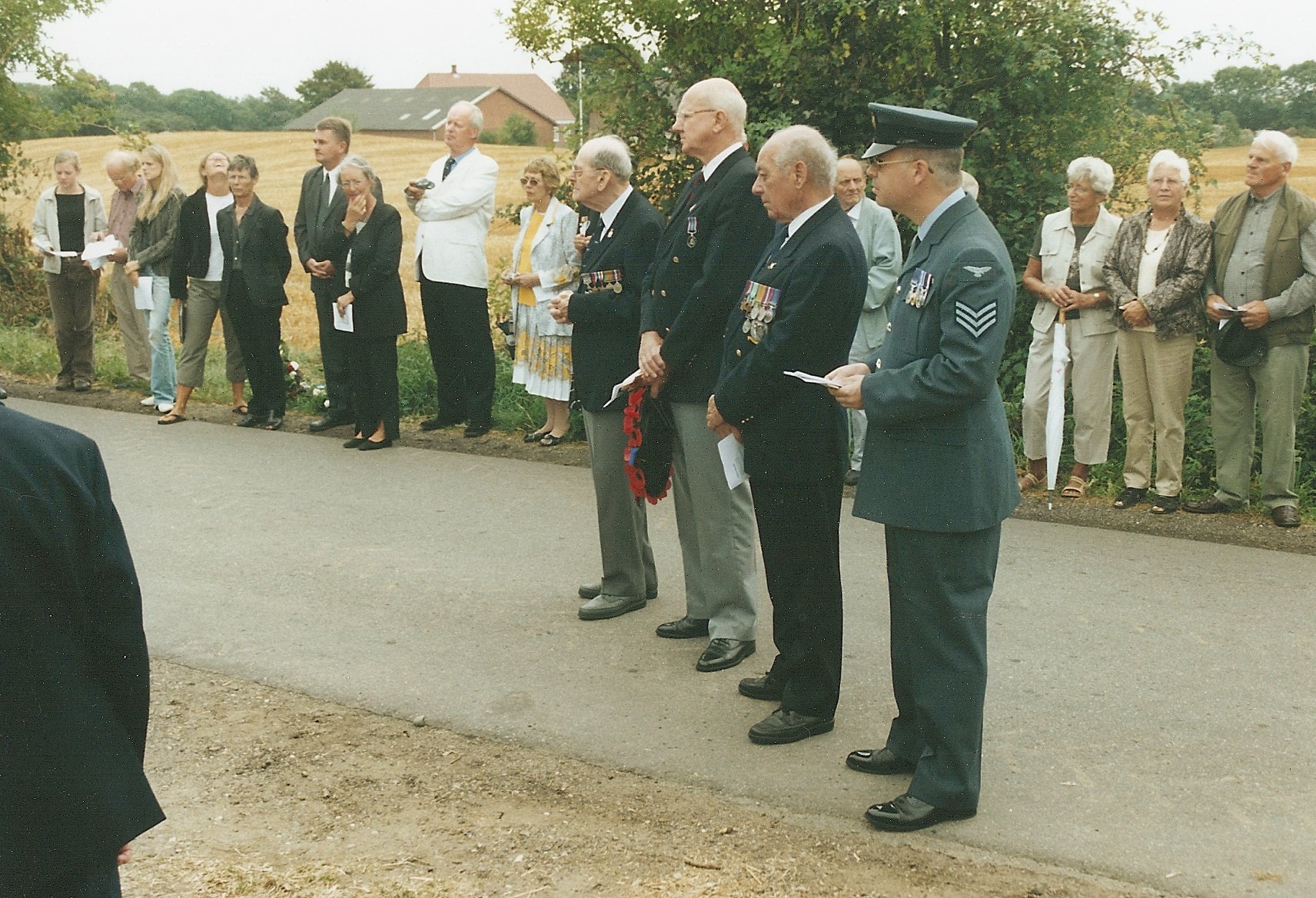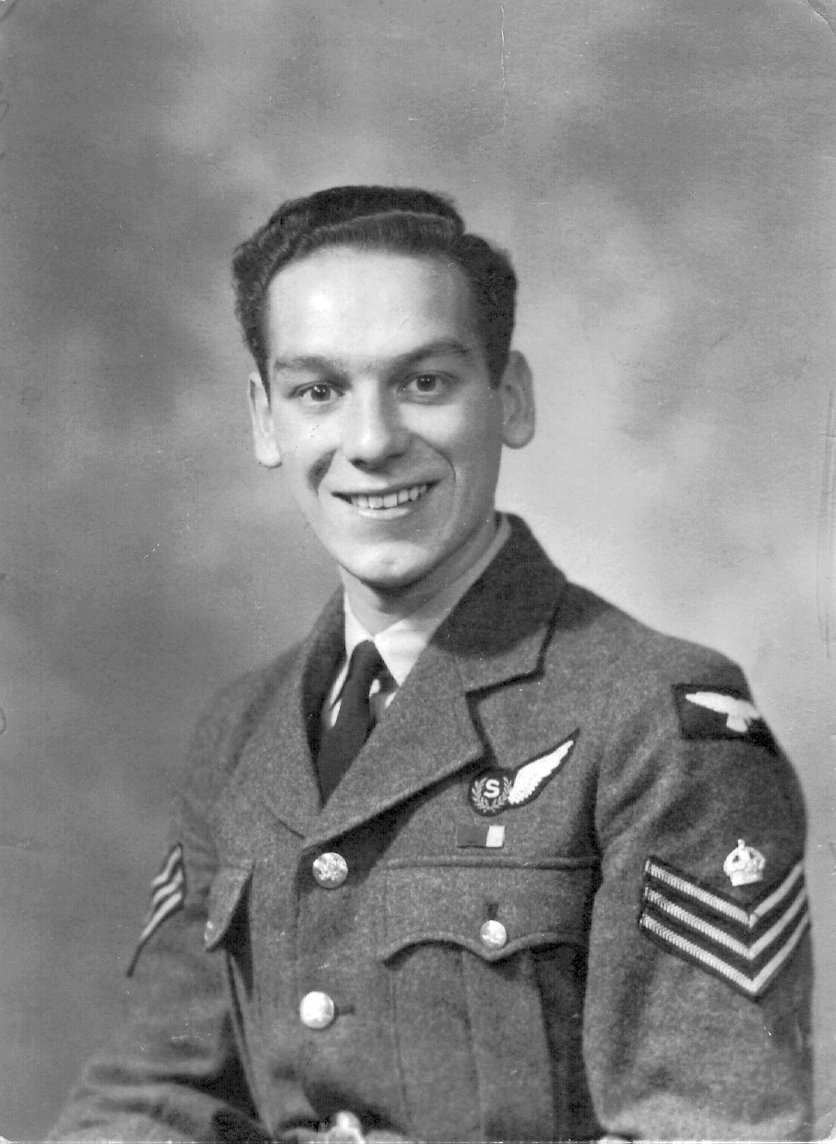In my time in 1944, on bombing operations, it was made even more narrow by the stowage of equipment such as the master compass unit, parachutes, axes, oxygen bottles, fire extinguishers and, in the cockpit just in front of the Flight Engineer, bundles of 2 types of "window", from floor to window level.
Baling out was a procedure that had to be dealt with as the situation demanded subject to these questions - Was communication severed? Was the aircraft on fire, if so - where? Were there flak damage and any injury to the crew? What escape hatches were accessible? Was the crew still able to receive oxygen? How was the aircraft flying - in a dive or spinning? Hitting another aircraft or being hit by bombs from one above caused other problems.
Each man had to get out as best as he could from where he could. It was the duty of the pilot, if he was still conscious, to try to control the aircraft long enough for the others to bale out or break out with the axes, and count them out if possible, then try to get out from the hatch above his head. There were so many cases where the hatches, or door could not be opened due to damage.
Theoretically, there was a drill for baling out. The pilot, if able would give the order and in case intercom was disconnected, flash the letter “J” - or “D” for ditching - which would be received by each crewmember on his light – used in case of lack of intercom. The Rear Gunner would try to reverse his turret and bale out backwards. The Mid Upper would go aft to check if the Rear Gunner had got out - otherwise to help if possible. In many cases, the rear door jammed and they had to break out. Even this was not always possible. Pages 305/6 of our book “The Dog”, illustrate what might happen.
In the front, the Bomb Aimer would have opened the front hatch or, if he had been with the Navigator working H2S and Gee, the Flight Engineer would perform this task and stand by to assist the others out. Each man would tap the pilot as they passed then he, after seeing them out if possible, would bale out through the hatch over his head.
It is a wonder to me that anyone was ever able to jump. Seeing aircraft on fire, going down directly in flames, spinning or exploding made me realise that there was very little chance, but it did happen as my records often show: -
"There was a blinding flash and the next thing I knew I was coming down by parachute with the handle in my hand. I have no recollection of opening it!”, - or - “There was a blinding flash and I found myself in the air and managed to pull the ripcord of my chute".
After the war, our Group Captain told me what happened to him - "There was a blinding flash and the next thing I knew was that I was lying in the Dortmund Ems Canal with a badly sprained ankle and other minor injuries. I have no idea how I got there. Fortunately, you had drained it". He then related what happened after that - quite a story!
It was Jessie’s first sight of the inside of a Lancaster. She found it hard to believe that the crew could carry out their duties in such a confined space, and it was extraordinary that they could endure so much discomfort for such long periods.
I have one regret about the visit to the Lanc; I did not have time nor room to point out things to you as I hoped I would.
Our good wishes to Ingelisa and to you.
“Uncle Will”
“The Dog”:
“Beware of the Dog – At War”. An Operational Diary of 49 Squadron. By John Ward.

|
Lojtland DK, 18. Aug. 2003.
Left to right:
Leslie J. Hay, Alan Parr, Ted Cachart, Sgt. A. Redulson |
Baling Out Drill.
|
On the 13th of September 1943 Sgt. Ted Cachart, Wireless Operator/Air Gunner in the 5 man crew of F/O J Young, (RCAF) were posted to 1660 HCU (Heavy conversion unit) RAF Swinderby in Lincolnshire to convert to four engine aircraft. They became a seven men crew by adding a Flight Engineer and a Mid Upper Gunner. After two trips on a Halifax they changed to ‘The Dream Machine’ they had hoped for – The Lancaster. |
 |
|
|
Ted Cachart in his book ‘Ted The Lad’ tells:
“Part of our training was learning the escape routine from a Lancaster for abandoning by parachute. We were required to do something like two hours of drill in a static fuselage, but we practiced a lot more. The friendly rivalry between our crews developed into a challenge to see which crew could do it the fastest.
The routine for abandoning the Lancaster by parachute was:
The flight engineer, bomb aimer, navigator and pilot would leave by the front hatch in the floor of the bomb aimer’s position. The hatch in the floor was removed and dropped through the hole by whoever was nearest.
The wireless operator would take his parachute from the storage rack, climb over the main spar, open the metal door and make his way down the darkened fuselage, check that the mid upper gunner was out of his turret and then proceed to the rear to assist the rear gunner out of his turret (difficult for the gunner due to the bulky clothing he wore). Meanwhile the mid upper gunner would open and fasten back the rear door.
The wireless operator would then be the first to sit on the exit step, facing forward in a crouched position and roll out to be followed by the gunners. This lessened the chance of hitting the tale plane, or if you did, it would be your back that struck it, you still would be able to open your ‘chute’. The only training we had on using a parachute was verbal instructions on counting to ten before pulling the ripcord handle and how to stop the chute from oscillating and spilling air: Reach up above your head, grasp a strap in each hand and pull downwards to counteract your swing, similar to the way one pulled the ropes of a garden swing but in the opposite direction to stop the ‘swing’ rather then increase it.”
The 3rd of January 1944 Sgt. Ted Cachart as Wireless Operator in Lancaster JB231 EA-N and crew all baled out successfully after a mid-air collision with another Lancaster JB727 EA-S at Neustrelitz near Berlin. The other crew were unfortunately all killed. Both Lancaters were from 49 Squadron.
Ted Cachart has told his story in his book
Ted The Lad
A Schoolboy Who Went To War
ISBN - 978 0 9532252 3 2
Jo Te Publications, 4 Cottage Close
Heage. Belper. Derby
DE56 2BS
email: tedthelad@tiscali.co.uk
Ted Cachart marks 70 years since joining RAF, see video:
http://www.bomberhistory.co.uk/49squadron/Publications.html
|

